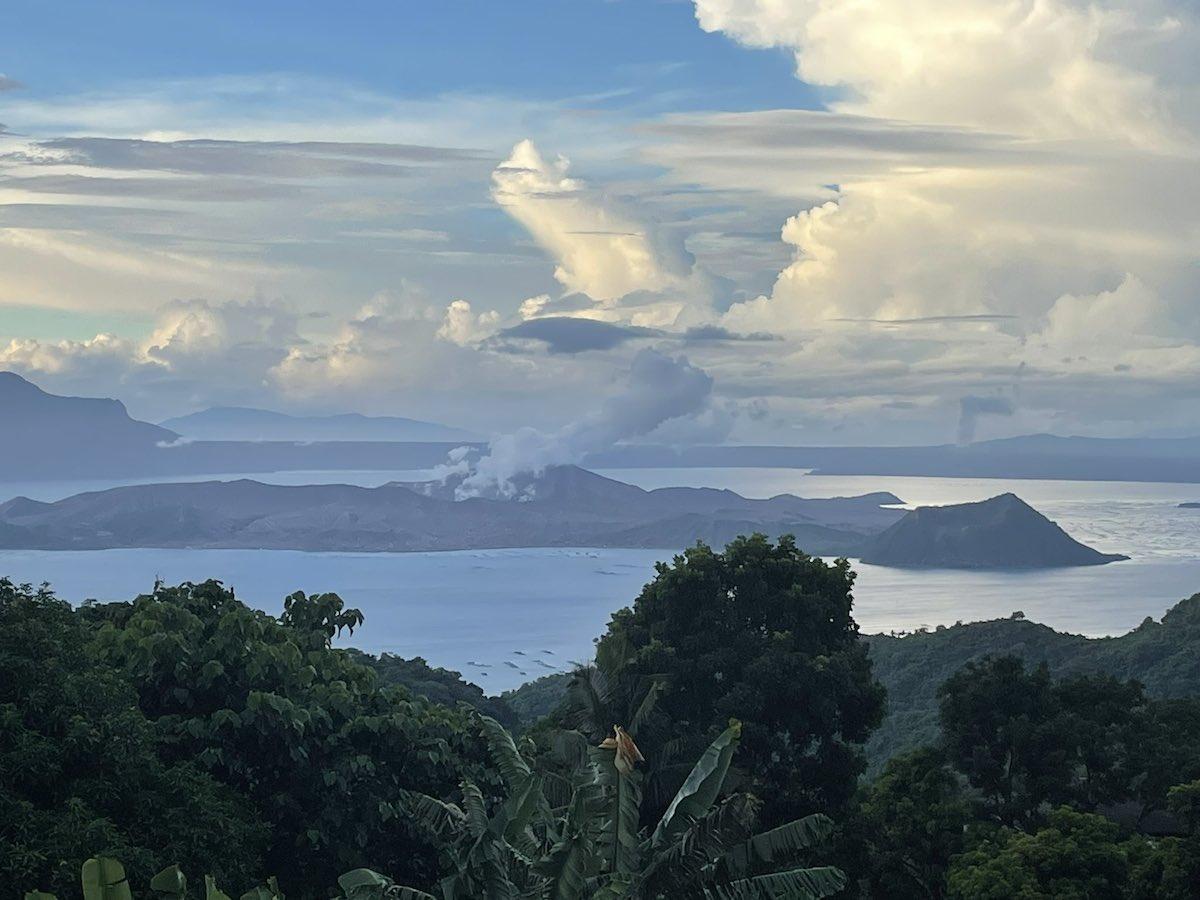PHIVOLCS warns, increase in sulfur dioxide emission from Taal volcano

The Philippine Institute of Volcanology and Seismology (PHIVOLCS) has posted an advisory on the increase in the emission of sulfur dioxide from the main crater of Taal Volcano on Thursday evening.
According to the advisory posted at 7 p.m., at least 10,718 tons of volcanic sulfur dioxide or SO2 was emitted per day from the Taal Main Crater that developed into a volcanic smog or vog at the Taal Caldera.
The released volcanic gas will be blown into the air towards the general westward direction based on the data from the air parcel trajectory of the DOAST-PAGASA.
The average SO2 flux for the month of September 2022 has reached 6,612 tons per day in conjunction with the high emission that began on July 15, 2022.
At the start of August 2022, there was also an outbreak of gas emissions that caused the upswelling of the lake at the main crater and the release of smoke or steam that reached about 2,500 meters high from the Taal Volcano Island.
The residents of the towns of Laurel, Agoncillo and Teresa in Batangas reported the presence of the vog.
Advice on presence of vog
As a reminder, the vog is composed of fine droplets that contain volcanic gas such as SO2 that is acidic and can cause irritation of the eyes, throat, and respiratory tract that may be severe depending on the concentration of the gas the length of time of exposure.
Individuals who may be particularly sensitive to the vog are individuals who be suffering from asthma, lung disease, heart ailment, the elderly, pregnant women, and children.
For the community that may be affected by the vog, take note of the following:
Limit your exposure. Avoid outdoor activities and keep doors and windows closed.
Protect yourself. Cover your nose, use N95 facemask. Drinks lots of water to lessen throat irritation or tightness. For the persons will illnesses, the elderly, pregnant women seek the advice of a doctor or go to the nearest barangay health unit.
Acid rain, which may occur during the rainy season and when the volcano emits gas in areas affected by the plume, can destroy crops and affect the metallic parts of houses and buildings.
Taal Vocano, DOST-PHIVOLCS said, remains under Alert Level 1 which means that the volcano is not in a normal state and the activity or the threat of its eruption has not yet passed.
The DOST-PHIVOLCS strictly prohibits entry into the Taal Volcano Island, which is the Permanent Danger Zone or PDZ of the Taal volcano, especially around and inside the main crater and the Spanish Road fissure. -- BAP, GMA News




